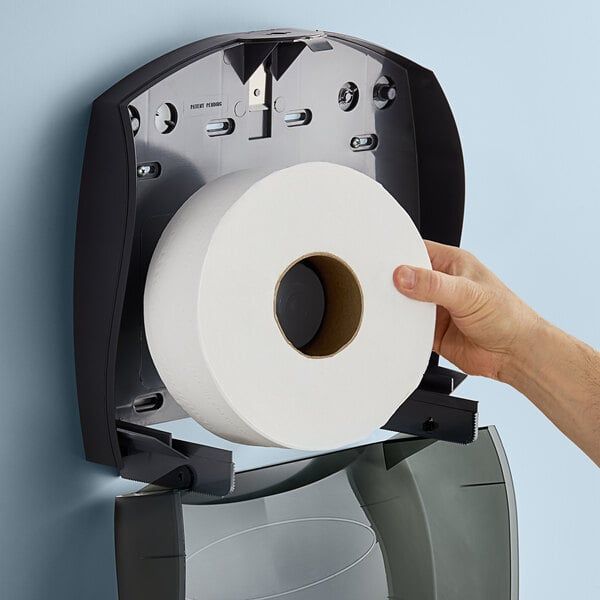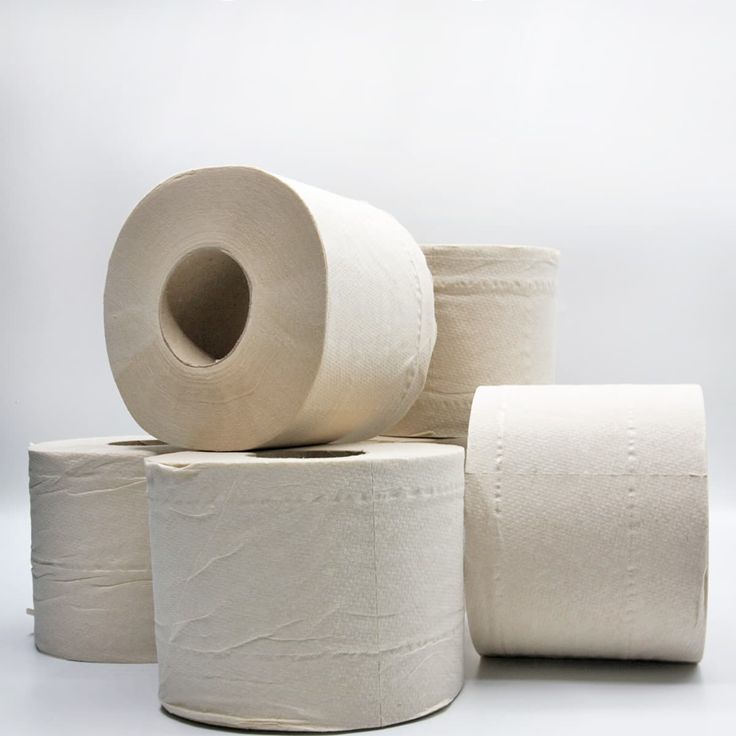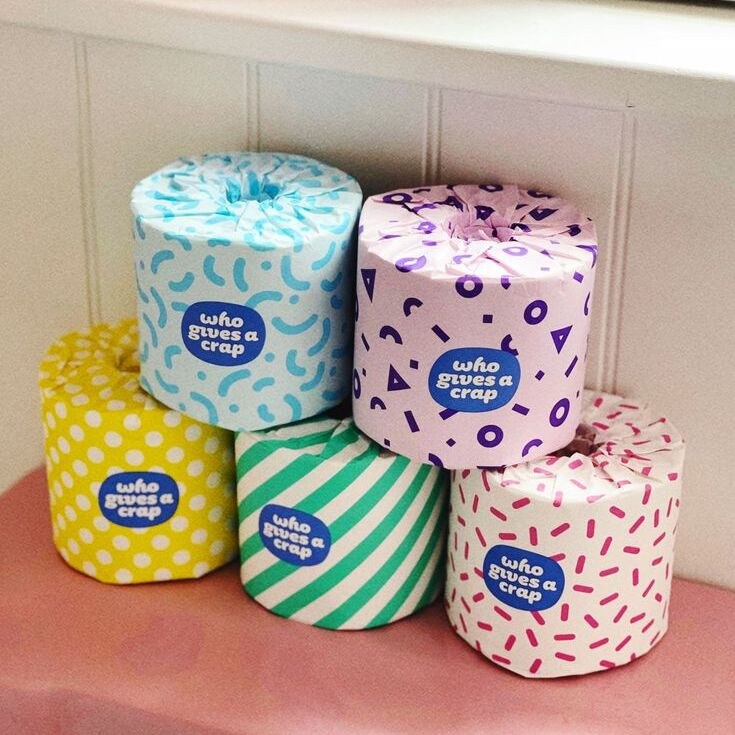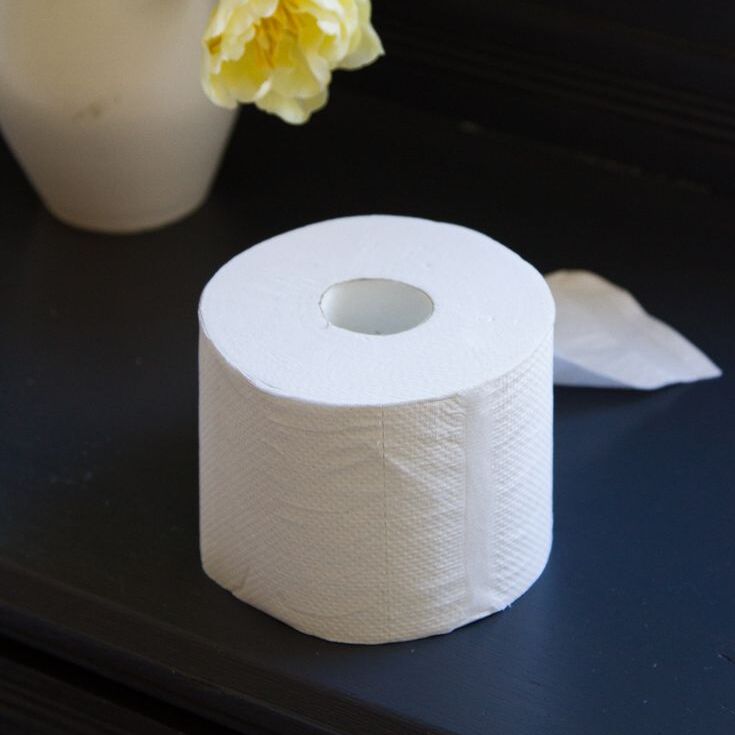What is Recycled Toilet Paper?
Recycled toilet paper is an eco-friendly hygiene option made from previously used paper products. It uses post-consumer materials to minimize waste and conserve natural resources. The manufacturing process involves careful cleaning and processing of these materials. The result is a safe, soft, and usable product for homes everywhere.
Definition and Characteristics
Recycled toilet paper uses repurposed paper instead of virgin wood pulp. It is manufactured without cutting down trees. This paper is biodegradable and often unbleached or treated with fewer chemicals. It may feel slightly rougher than traditional options but serves the same functional purpose. Packaging is typically designed to be plastic-free and recyclable, further enhancing its eco-friendliness.

How it Differs from Traditional Toilet Paper
Traditional toilet paper relies on cutting trees to produce virgin wood pulp. Recycled toilet paper avoids deforestation by using existing materials. It requires less energy and water during production compared to its conventional counterpart. The color, texture, and softness may differ slightly, but its environmental benefits outweigh these minor contrasts. While traditional options often include heavy bleaching, recycled versions prioritize chemical-free alternatives, making them better for the environment and human health.
Environmental Benefits of Using Recycled Toilet Paper
Switching to recycled toilet paper offers numerous environmental advantages. It reduces waste, saves natural resources, and lessens the ecological impact of paper production. Let’s examine the key benefits in detail.
Reducing Deforestation
Recycled toilet paper helps preserve forests. Unlike traditional toilet paper, it uses no virgin wood pulp. This means fewer trees need to be cut down. Forests play a vital role in combating climate change. They absorb carbon dioxide and provide habitats for countless species. By choosing recycled options, consumers can minimize deforestation and support forest conservation efforts.
Minimizing Carbon Footprint
Manufacturing recycled tissue paper emits less carbon dioxide compared to conventional production. It uses fewer resources such as energy and raw materials. The reuse of existing paper products reduces landfill waste, cutting down methane emissions. This smaller carbon footprint makes recycled tissue paper an eco-friendly alternative.
Less Water and Energy Usage in Production
Creating recycled toilet paper consumes less water and energy. Conventional toilet paper production often requires large amounts of both. Recycling processes optimize resource use by repurposing materials. This efficiency helps preserve water supplies and reduces strain on energy systems. Overall, it supports a more sustainable manufacturing process.

How Recycled Toilet Paper is Made
Recycled toilet paper goes through a thoughtful and efficient manufacturing process. This ensures environmental friendliness, product safety, and high quality. The process involves sourcing recycled materials and using less harmful chemicals. Let’s explore the steps in more detail.
Collection and Processing of Recycled Fibers
Recycled tissue paper starts with collecting used paper products. Sources include office paper, newspapers, and cardboard. These materials are then sorted to remove contaminants like staples, plastic, or ink.
Next, the sorted paper is soaked in water to create a pulp. This softens the materials and breaks them down into usable fibers. The pulp is carefully cleaned to remove inks, adhesives, or any other residues. Various machines ensure that only clean fibers move forward in the process.
This step is crucial in recycling because clean, processed fibers determine the final product’s quality. Sustainable practices are prioritized to optimize waste reduction and material reuse during this stage.
Bleaching and Chemical-Free Alternatives
Many recycled toilet papers avoid harmful chemical treatments like heavy bleaching. Instead, they use oxygen, ozone, or hydrogen peroxide to whiten the fibers. These methods are safer for the environment and consumers.
By avoiding chlorine-based bleaches, recycled tissue paper reduces toxic emissions during manufacturing. Some brands even skip whitening altogether, offering unbleached toilet paper. This natural look highlights its eco-friendly nature.
Thanks to fewer chemicals, recycled tissue paper is biodegradable and less likely to irritate sensitive skin. These practices ensure the product remains safe while staying true to its environmental mission.
Pros and Cons of Recycled Tissue Paper
Recycled toilet paper is an eco-friendly choice, but it has its benefits and challenges. Understanding its pros and cons can help consumers make informed decisions about choosing sustainable options.
Advantages: Cost, Availability, and Sustainability
- Cost Efficiency: Recycled toilet paper is often cheaper due to lower production costs. Utilizing recycled materials reduces resource dependency, helping manufacturers keep prices competitive.
- Wide Availability: Many brands now offer recycled tissue paper in various qualities and packaging formats. You’ll find them at most supermarkets and online retailers, making it easy to switch.
- Environmental Sustainability: Using recycled tissue paper supports waste reduction and protects forests from deforestation. Its manufacturing process consumes less energy and water, contributing to a smaller environmental footprint.
- Plastic-Free Packaging: Most recycled tissue paper brands ensure eco-friendly packaging, further boosting their environmental appeal.
Disadvantages: Texture and Durability
- Rough Texture: Recycled tissue paper may feel less soft compared to conventional toilet paper. While not as smooth, brands aim to balance comfort with sustainability.
- Lower Durability: Recycled fibers can sometimes make the paper more fragile. This may mean using more sheets for the same task, slightly reducing efficiency.
- Limited Use of Fancy Features: High-end features like scented paper or embossed designs may not be available. These extras are often avoided to reduce chemical usage and environmental impact.
Balancing the advantages and disadvantages, recycled toilet paper is still an excellent sustainable choice. Its benefits for the planet far outweigh minor inconveniences for most users.

Choosing the Best Recycled Tissue Paper
Selecting the right recycled toilet paper is crucial for both comfort and sustainability. Understanding key qualities and exploring reliable brands can make the decision easier.
Key Qualities to Look For
- Eco-Friendly Manufacturing: Look for brands that prioritize sustainable practices. Opt for products made without harmful chemicals.
- Comfort and Texture: Evaluate the softness and thickness. While slightly coarser, quality recycled options feel comfortable.
- Biodegradability: Ensure the toilet paper breaks down quickly to reduce environmental impact.
- Certifications: Check for labels like FSC Certified or Green Seal, indicating responsible sourcing and environmental care.
- Packaging: Go for plastic-free and recyclable packaging as an added sustainable benefit.
- Affordability: Compare prices to balance eco-friendliness with your budget.
Popular Brands Offering Recycled Tissue Paper
- Seventh Generation: Known for their unbleached, high-quality recycled tissue paper. They use eco-conscious packaging.
- Who Gives A Crap: This brand combines sustainability with fun branding. It offers 100% recycled rolls.
- Green Forest: They focus on using chlorine-free processes and are ideal for sensitive skin.
- Caboo: While primarily a bamboo-based brand, their hybrid products include recycled fibers for added sustainability.
- Marcal Small Steps: Affordable and widely available, these options are perfect for value-conscious shoppers.
Choosing the best recycled toilet paper is about balancing comfort, sustainability, and cost. With many options available, you can easily make a positive impact on the environment while meeting your hygiene needs.

Comparing Recycled Toilet Paper with Other Sustainable Options
When choosing sustainable toilet paper, it’s worth comparing recycled options with alternatives like bamboo or hybrid products. Each offers unique benefits, but also has some drawbacks. Understanding these differences can help you make an informed decision.
Bamboo Toilet Paper
Bamboo toilet paper is another eco-friendly choice. Unlike recycled toilet paper, it starts with renewable bamboo plants, which grow quickly and require fewer resources. Here are its key features:
- Sustainability: Bamboo is highly renewable and grows without pesticides or chemicals. Using bamboo avoids deforestation.
- Texture and Comfort: Bamboo toilet paper tends to be softer and stronger compared to recycled options.
- Biodegradability: Bamboo fibers break down easily, making these products compostable and environmentally friendly.
- Production Impact: Although bamboo toilet paper has a low impact on forests, sourcing bamboo can lead to some environmental stress, such as land-use change.
Hybrid Eco-Friendly Alternatives
Hybrid toilet paper combines bamboo, recycled paper, or other sustainable fibers. Products using a mix of materials aim to enhance eco-friendliness and functionality. Here’s what sets them apart:
- Balanced Sustainability: These products often use recycled fibers mixed with fast-growing plants like bamboo.
- Improved Durability: Hybrid paper can offer stronger sheets than standard recycled tissue paper.
- Variety in Manufacturing Practices: Brands may use safe chemicals or opt for no-bleach processes.
- Cost Efficiency: While often priced higher than traditional options, hybrids balance cost and sustainability better.
Comparing these options shows all types of sustainable toilet paper address environmental concerns differently. Whether you choose recycled fibers, bamboo, or hybrids, all aim to reduce ecological impact while meeting hygiene needs.
Tips for Switching to Recycled Tissue Paper
Switching to recycled toilet paper is a simple step toward living an eco-friendly lifestyle. It might take some time to adjust, but the environmental benefits are well worth it. Let’s explore how to make this transition smoother and inspire others to join the movement.
Adapting to the Change
- Start Gradually: Begin by incorporating recycled toilet paper into your routine one roll at a time. This gradual approach makes the transition easier and less overwhelming.
- Experiment With Brands: Explore different brands of recycled tissue paper. This will help you find the best option that balances softness, durability, and affordability to suit your needs.
- Educate Yourself: Take the time to understand the environmental impacts of using recycled tissue paper. Knowing the benefits can help keep you motivated in your commitment to this eco-friendly choice.
- Be Patient: Keep in mind that the texture might feel slightly different at first. Allow yourself time to adjust to the new product.
- Combine with Other Habits: Pair your switch to recycled tissue paper with other eco-friendly practices. For example, consider reducing single-use plastics or recycling more.
Encouraging Family and Friends to Go Eco-Friendly
- Share Benefits: Explain how recycled toilet paper can significantly reduce deforestation. Highlight how using it helps lower carbon footprints and promotes sustainability.
- Gift Eco-Friendly Products: Offer samples of recycled tissue paper as thoughtful, eco-conscious gifts. This introduces others to a sustainable choice they might not have considered.
- Set Example: Use recycled toilet paper regularly in your home. Your consistent choice will influence family and friends, encouraging them to adopt this eco-friendly habit.
- Talk About Savings: Highlight the cost-effectiveness of recycled tissue paper. Point out that it often costs less than traditional options while being equally effective.
- Use Positive Language: Frame the switch to recycled tissue paper as a small but impactful action that contributes to a healthier planet. Emphasize how easy it is to make a positive change in daily life.
By adapting to recycled toilet paper and spreading awareness, you can lead the way toward sustainable living. Remember, every small change counts for the environment.

The Future of Sustainable Hygiene Products
The future of hygiene products is moving toward sustainability. Recycled tissue paper leads this change, ensuring environmental benefits. Let’s explore how innovations and industry impacts will shape this future.
Innovations in Recycled Toilet Paper
- Improved Texture and Softness: Advancements focus on making recycled toilet paper softer and more comfortable. Enhanced processing methods reduce coarse textures while maintaining eco-friendliness.
- Chemical-Free Treatments: Manufacturers are innovating with natural whitening methods. These reduce harmful chemical use and maintain safety for users.
- Hybrid Materials: Combining recycled fibers with bamboo or other sustainable materials improves durability and texture. These blends balance sustainability with user comfort.
- Energy-Efficient Production: New technologies minimize energy and water consumption in manufacturing. This supports lower carbon footprints for recycled tissue paper.
- Smart Packaging: Brands are adopting biodegradable or reusable packaging. This eliminates plastic waste and complements sustainable goals.
- Customization Options: Some companies offer customizable rolls for style-conscious consumers. Custom designs enhance appeal without compromising sustainability.
Innovations ensure recycled toilet paper meets consumer needs while remaining eco-friendly. These advancements redefine its value in the hygiene market.
Broader Impacts on the Paper Industry
- Eco-Conscious Production: Demand for recycled toilet paper motivates the paper industry to adopt greener standards. Sustainable practices are becoming the norm.
- Reduced Deforestation Pressure: Recycled paper products slow the reliance on virgin forest materials. This helps protect ecosystems and biodiversity.
- Circular Economy Growth: Recycling creates a loop where used materials become new products. This reduces waste and optimizes resource usage.
- Increased Consumer Awareness: As more people choose recycled options, awareness of environmental issues grows. This drives demand for other sustainable products.
- Innovation in Other Products: The success of recycled toilet paper inspires similar approaches for towels, napkins, and tissues. The industry embraces alternative materials for everyday items.
- Corporate Responsibility: Companies now prioritize sustainability to stay competitive. Eco-friendly goals are becoming essential for long-term growth.
The paper industry’s shift toward sustainability benefits the planet and consumers alike. Recycled tissue paper plays a key role in this transformation.

